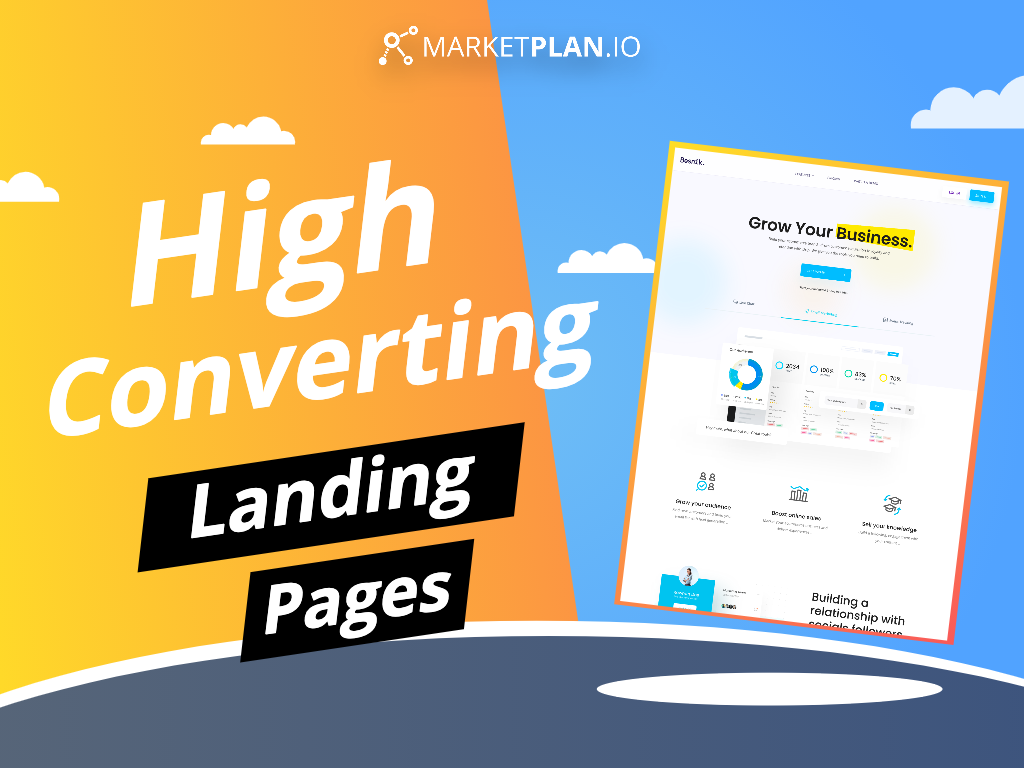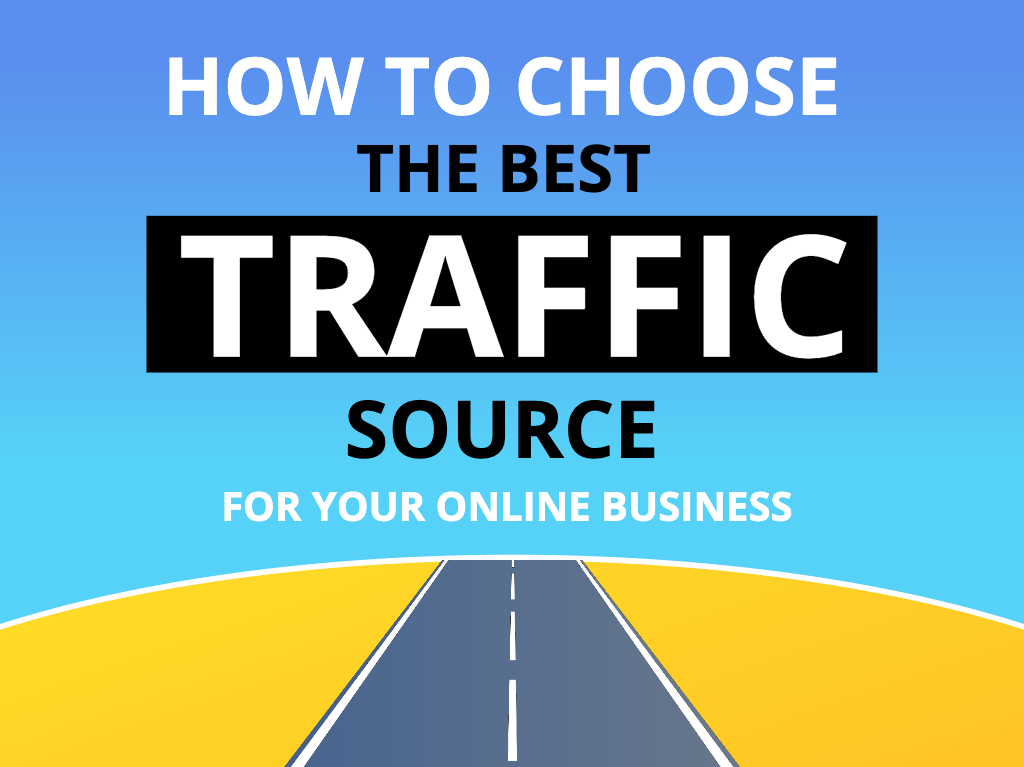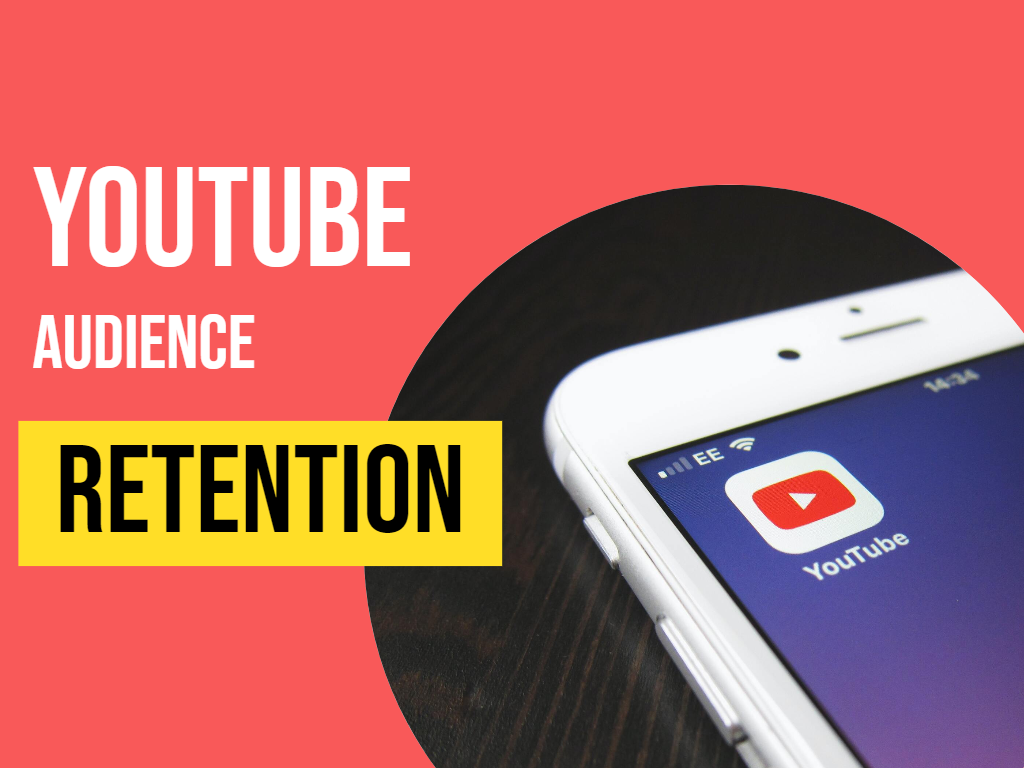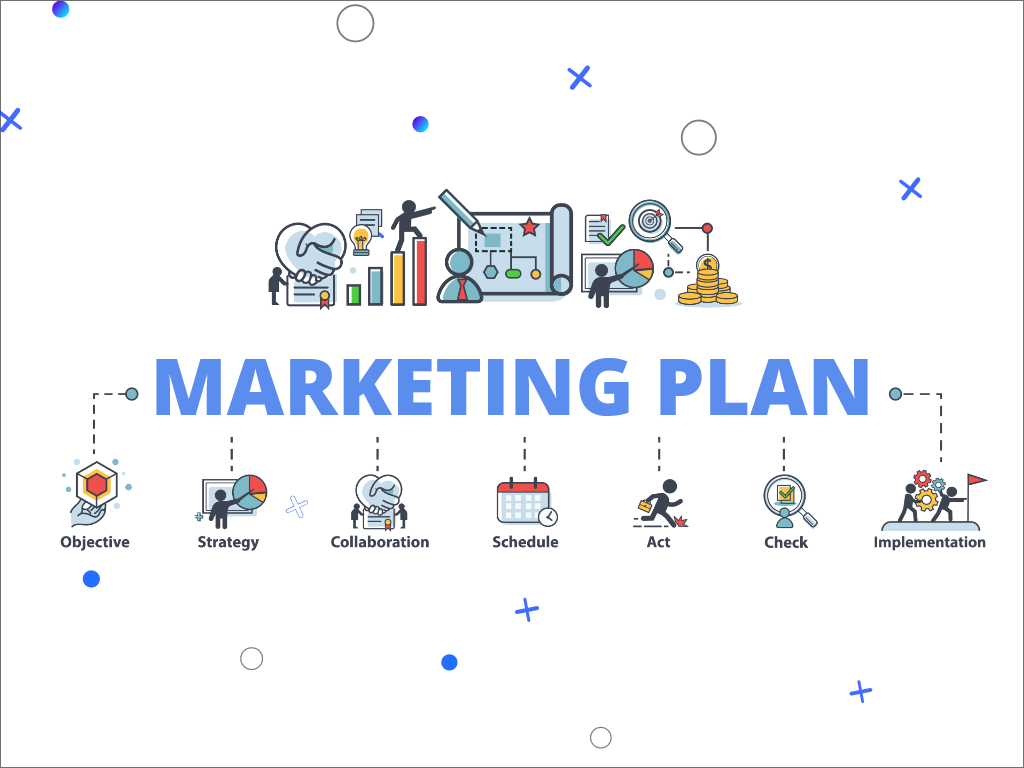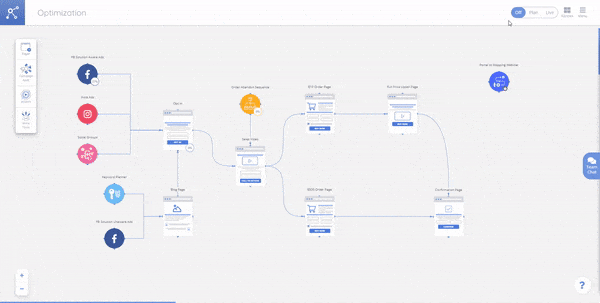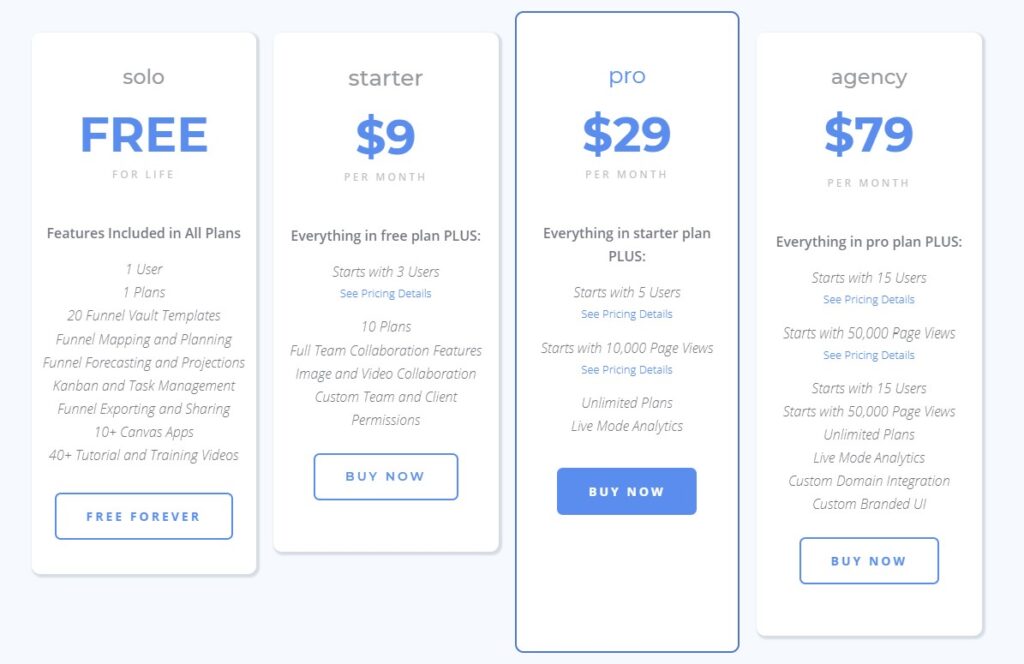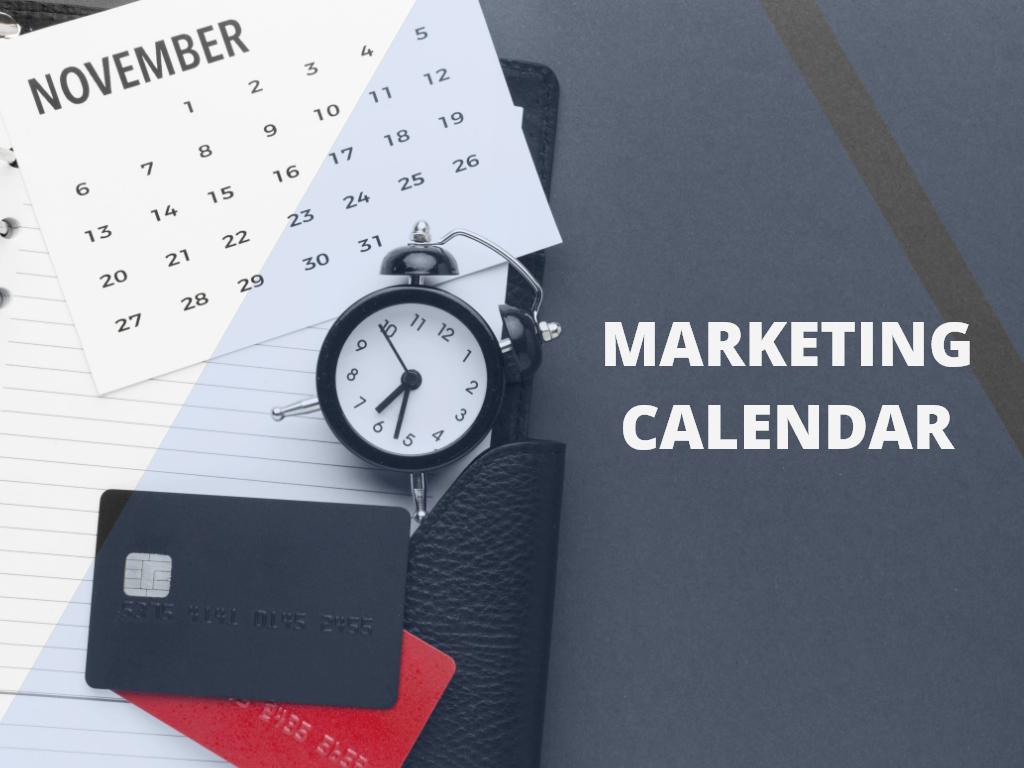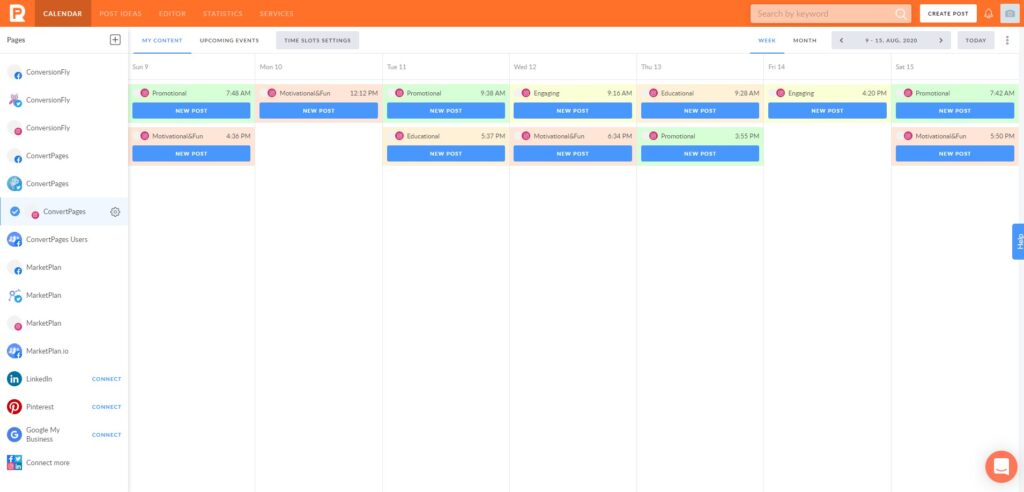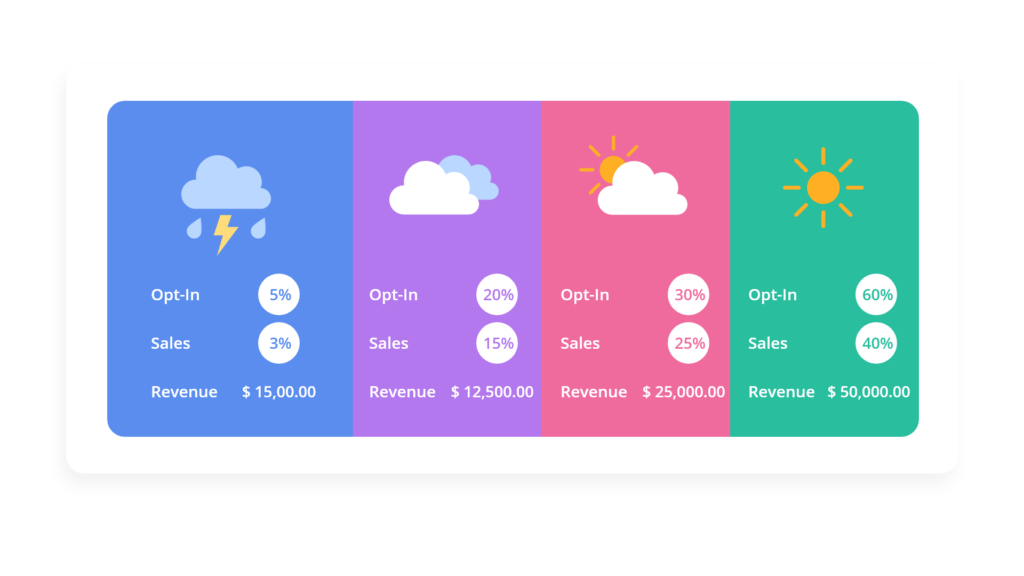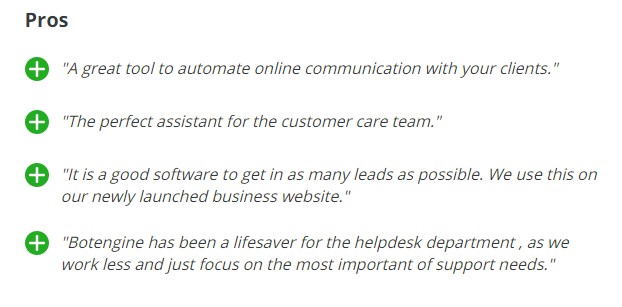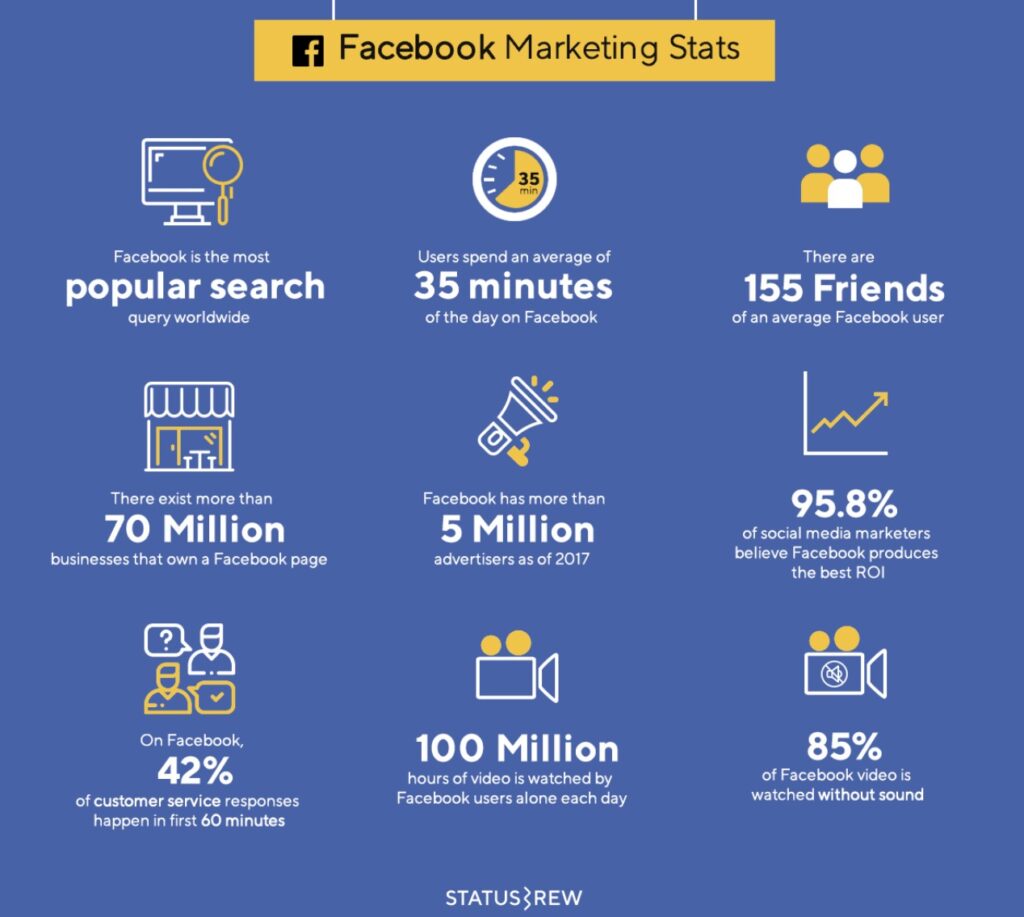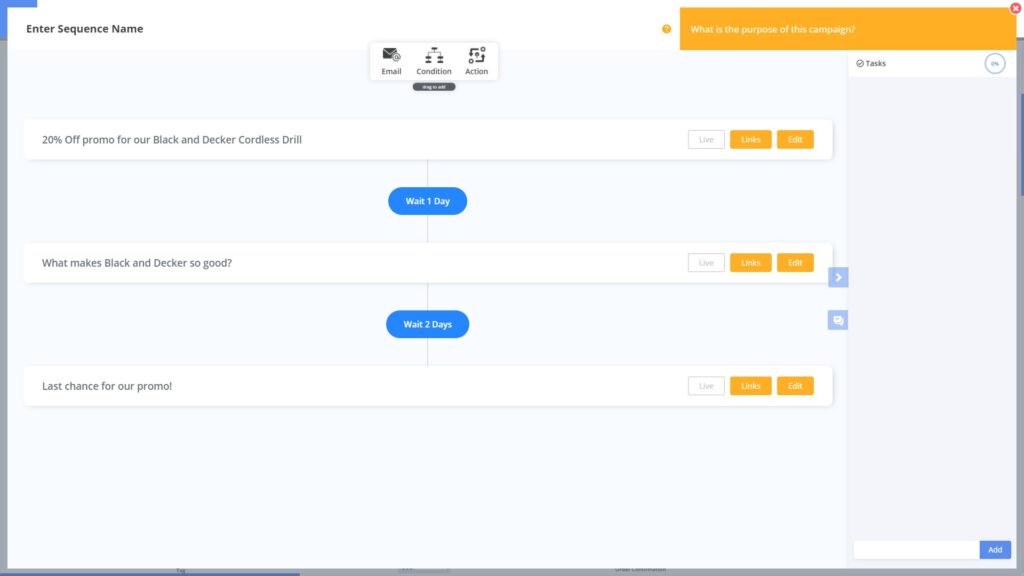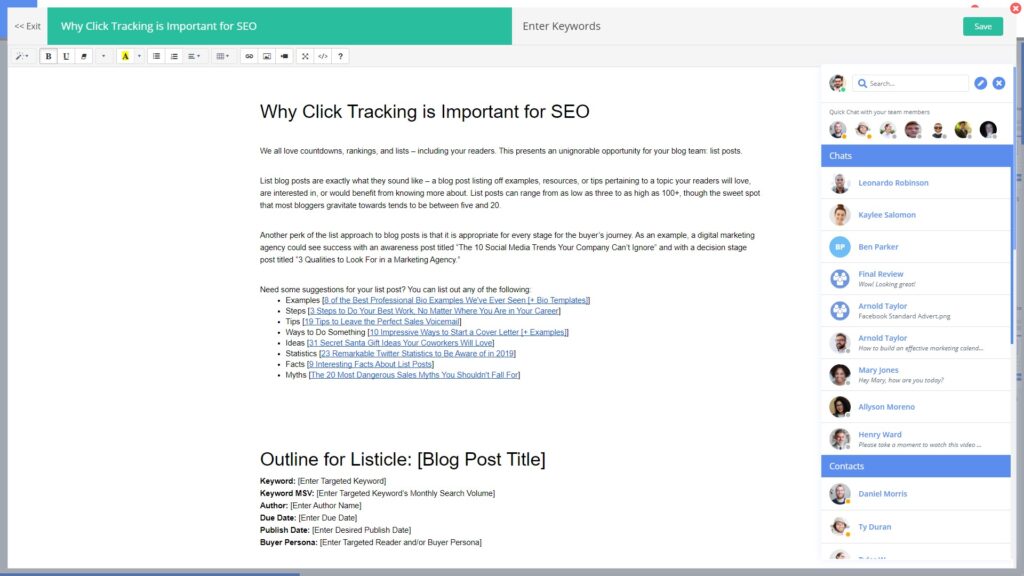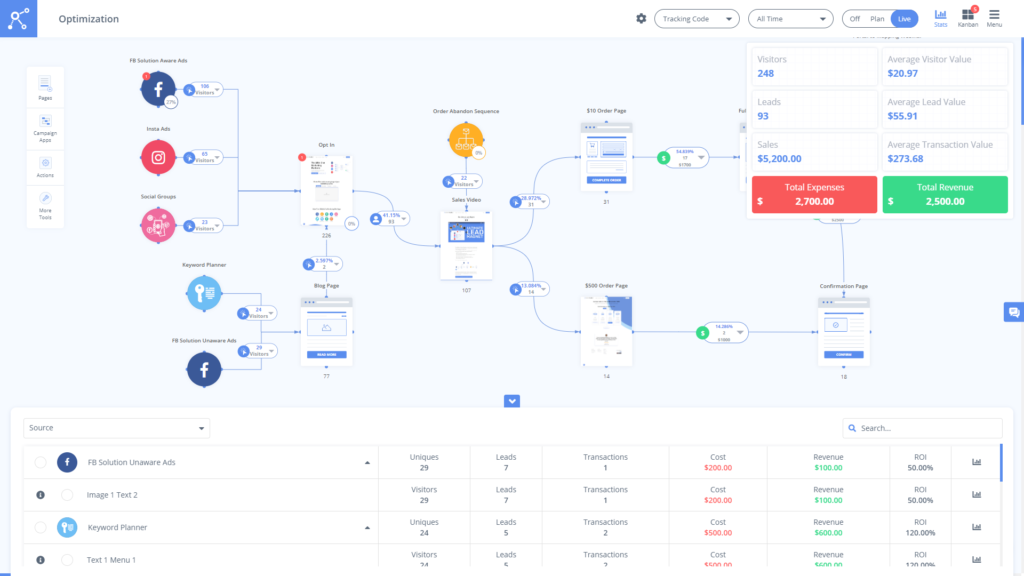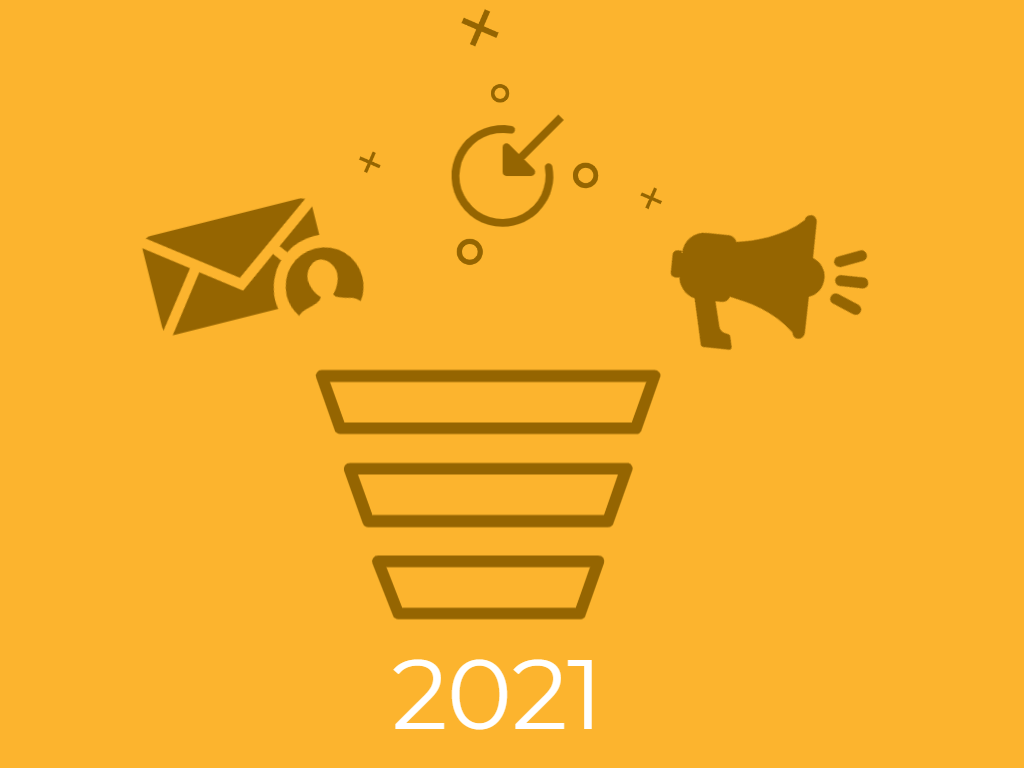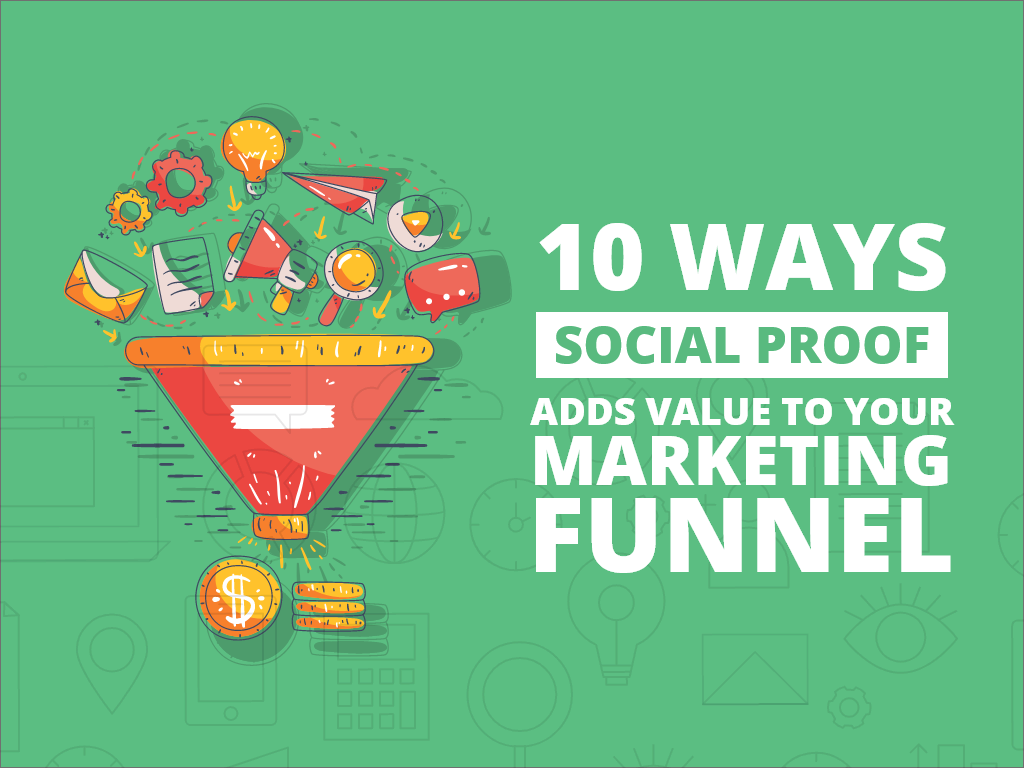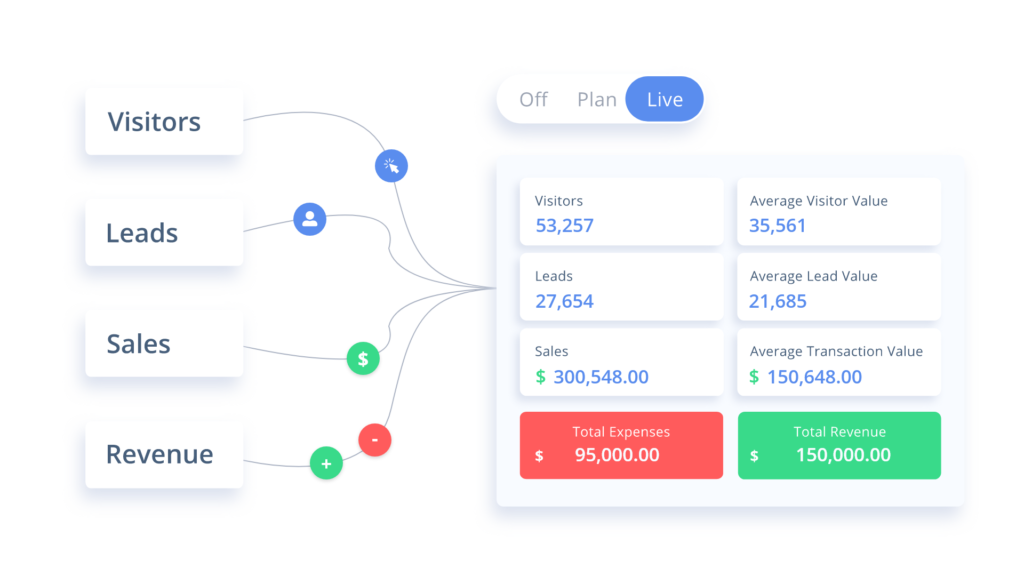Traffic sources are the foundation of revenue for any internet business. In fact, one of the most important decisions a new online business needs to make is choosing their traffic sources.
Creating a profitable marketing strategy is challenging enough without having to worry about which type of traffic to focus on. With so many traffic sources available, it can be difficult to know which one will provide the best return on your investment (ROI).
Why is it important to decide on the right traffic source for your online business?
If you’re a business owner, you would naturally spend time researching different ways of promoting your product or services online. You don’t want to be wasting your marketing efforts.
You must take time out in order to pick the most effective way of promoting your products, to make sure that you make the right decision when picking the most profitable traffic source that suits your business.
There are many different types of traffic out there, so it can be difficult to decide which is best for your business. It can help to experiment with different sources first before deciding on the most effective one for your campaign.
One way to find a good traffic source is by looking at the demographics of your target audience. Which channels are they using? Are they more likely to use search engines or specific social media platforms? Or maybe they prefer email newsletters? What are the benefits of paid advertising? Should you start with free methods and see what happens, or go straight to paid advertising? There are so many questions to answer and can be quite overwhelming when you first come up with your marketing idea.
Therefore it is so important to figure out what works best before you invest time and money into a traffic source that isn’t right for you.
What are the factors to consider before deciding on the right traffic source?
There is not a single traffic source that fits every type of business. There are many sources of traffic such as organic search, paid search, social media channels and many factors can impact your decision. Lets have a look at some of these,
- The financial investment required to implement the strategy,
- The human resources that are required,
- Time it takes to see the positive results from the campaign,
- The primary location of your business and whether it is local or spread across a wide geography,
- The primary goal of the traffic generated and conversion rates expected,
- The type of customer you want to target based on your product or service. The traffic source for a B2B business can be vastly different to a B2C business, so it is important to do the preliminary research on your target audience.
- The volume and quality of the targeted traffic. Some businesses need a low volume of high quality and highly priced traffic while others need a large volume of website visits even if the cost to get them is lower.
- The traffic source and strategies your competitors are using to grow and scale their business,
- Ease of use in setting up the campaigns, tracking the results, and optimizing for higher conversion rates,
- Support for multiple languages and currencies,
- Security and reliability of the source,
Once you have factored in all the above points, you have the below options to choose from to finally decide on the best sources of website traffic for your business.
1. Search Engine Optimization (SEO)
Time for positive returns – Long term
Risk factor – Low
SEO is arguably the most important part of any digital marketing strategy, and for good reason. SEO traffic is consistent because once you have your website and content ranked for your target keywords, you get a continuous flow of traffic as long as you keep optimizing the content and maintain the ranking.
Most importantly, SEO traffic converts extremely well when compared to other sources due to its natural targeting and buyer intent.
SEO also allows you to establish brand awareness over the long term as opposed to other traffic sources that may produce instantaneous results but have no permanent advantages.
It has higher conversion rates than any other traffic source as search engine users are already interested in a related product or service of yours. Another advantage is that SEO can be used in conjunction with other traffic sources to maximize your marketing efficiency for an even greater return on investment.
Unlike PPC or email marketing, there is no way to spam SEO, making it one of the most trusted sources of traffic.
You can also complement SEO with other forms of content marketing technique through infographics, how-to guides, e-books, etc.
If you have a software product, you can make a part of the tool or a basic version completely free to make visitors come back to your website more often. Or you can build a free sub-product that links back to your main product. This way your website gets constant engagement and thereby improves SEO in the longer term.
To start with, you don’t need any expensive paid tools. There are many free tools and Google’s own tools like Search Console and Analytics that can be used to begin with your blog.
You can just start with running an audit of your website in its current state and note down the following,
- The list of keywords the site currently ranks for, if any? If the site ranks for any primary seed keywords, is there any opportunity for sub keywords that you can write content on?
- Evaluating how well optimized your site is, how fast it loads, and if there are any errors on it that might be preventing people from visiting it or making any purchases.
- The existing backlink profile of the website. What is the domain authority of the websites linking to your content? If there are absolutely no backlinks, what are the best possible options to start with a backlink outreach campaign?
- How is the readability of your website’s content? How easy or difficult is it for the visitors to consume content?
Once you have answered the above questions, you will have a fair idea on what you need to do initially on a high priority basis.
Google keeps updating its algorithm, therefore it is important to keep tabs on it and continuously improve your content to maintain your rankings once you have achieved it.
After you have got the knack of it and want to scale your SEO efforts further, there are many excellent tools like Ahrefs, Semrush, SE Ranking, etc. that will help you to do more in discovering keywords, backlink research, and a whole lot more.
2. Pay Per Click (PPC) Campaigns
Time for positive returns – Short term
Risk factor – High
Paid advertising traffic is not just about paying for the clicks; it’s also about tracking the conversion of clicks into customers. You can test different keywords and promotional methods to learn what works best for your audience.
While Google Ads and Facebook Ads are predominantly the biggest ad platforms, there are so many other channels like Pinterest, Quora, Reddit, Twitter, YouTube, etc. that you can experiment with.
If you are planning on a software business, there are even some hyper targeted B2B platforms like Capterra and G2 where you can run your PPC campaigns.
Paid advertising gives you nearly immediate results and you can keep optimizing the campaign in real-time to maximize the returns on your ad spend.
In addition to the traditional type of advertising through various platforms, you can also try running sponsored blog posts organized with individual website owners. This might lead to a lesser volume of traffic, but the quality of traffic tends to be high as it is quite targeted and the audience is knowledgeable.
PPC campaigns also give you good control of your marketing budget as you can define your ad spend at the beginning of every month and work on it.
However, it is very important that the PPC campaigns are handled by experts either in your own company or you outsource it to advertising agencies who have vast experience in running multiple campaigns.
An advertising campaign that is run without proper knowledge of keyword research, keyword bidding, landing page design, CTA placement, etc. could cost you hundreds or even thousands of wasted dollars.
Data research also plays a huge part in effective paid ad campaigns. It is essential to continuously crunch the numbers you see from the campaigns and keep optimizing it to consistently improve the conversion rates.
3. Email Marketing
Time for positive returns – Medium to long term
Risk factor – Low
So what are the advantages of using email marketing over other marketing channels? Well, email is still widely considered the #1 marketing channel, it’s opted into (so you’ll see higher engagement rates), it’s personalized, it’s very affordable, and it’s super easy to monitor ROI.
While it’s a bit more challenging than other forms of marketing to build the initial subscriber base, it is also a more effective and rewarding way of building sales, revenue and establishing your business as an authority.
It’s also a fantastic way to interact with your customers. People are receiving more emails every day than ever before, and this means that getting your message across can be tricky. You need to ensure that your emails are well-crafted with excellent copy that will resonate your subscribers.
Also, in most cases, you have already established an initial relationship with your prospects before they sign up to your newsletter. This provides that personal touch and trust that is so vital to turn prospects into customers.
4. Influencer Marketing
Time for positive returns – Short term
Risk factor – Medium to high
With social networks continuing to grow, Influencer Marketing has grown significantly alongside them, particularly in the e-commerce space.
There are a few things you need to consider before approaching an influencer to promote your product or service.
- The size of the following the influencer has,
- The type of demographics the followers generally fall under,
- Cost per campaign run,
- Any guaranteed traffic and conversion numbers?
Based on the answers to the above queries, you can run a search on the best influences available in your niche, reach out to them personally, and work out a deal to promote your product or service.
It is important that you choose the influencer that shares your values as a brand, as it is going to get associated with your brand when they promote your product or service.
5. Cold Outreach Campaigns
Time for positive returns – Short term
Risk factor – Low to Medium
Cold emailing and outreach campaigns are a fantastic way to grow your website’s traffic. It’s a very time consuming task, but if done well, you could bring in thousands of new visitors from a single email campaign.
Cold email campaigns are completely different to general email marketing as the email recipients are not subscribed to your newsletter. Therefore, it is vital that you get the email copy spot on so that it doesn’t look spammy or outrightly looking for a sale.
The best practice is to keep the initial one or two emails short and precise to the point. The aim of these first emails should be just to introduce yourself and spike an interest in your product or service.
Once you have got a response, it is time to provide as much as value through the subsequent emails before offering your product or service explaining your unique value proposition in detail. It can be done by mentioning things such as industry trends, articles or other relevant information.
Another key factor for generating an effective cold email campaign is the right subject line. The subject should show that it is relevant and important and not be too long or cluttered with information.
6. Online Forums
Time for positive returns – Medium to long term
Risk factor – Low
Forums such as Reddit and Quora provide user-generated content that is insightful and are a good source for website traffic.
Forums are often overlooked as a potential source of traffic. But, in reality, they are an underused resource that can create more organic traffic to your website.
Reddit and Quora also have groups like Quora spaces, Subreddits, etc. which makes it easier to have a conversation and build your authority in the niche your business serves.
There are some entrepreneurs who have built a huge following and authority in Quora just by consistently adding value to the readers by giving insightful answers.
It is important to build up our credibility in Quora by providing the right credentials and achievements.
One more advantage of Quora is that its answers rank very highly on Google searches, therefore you can leverage its authority effectively to get search engine traffic even though your site technically doesn’t rank directly on Google.
Quora ranks for hundreds of millions of keywords across all geographies. Therefore, irrespective of your business type and location, you will find keywords that Quora ranks for that you can tap as potential source of traffic to your website.
If you are already using tools like Ahrefs and Semrush, you can dig a bit deeper in this strategy. You can run a search for the keywords Quora ranks for in your niche. You can do this by running a search on Site Explorer in Ahrefs and narrow down the search with keyword filters you want to target.
Once you have narrowed down the search, you can then write detailed and insightful answers to outrank other answers. You can do this for multiple keywords and questions which cumulatively will lead to a lot of traffic to your website in the longer run.
You can also run paid ads on both Quora and Reddit provided you have the expertise to set up the campaigns and have the budget for it.
7. Facebook Groups
Time for positive returns – Medium to long term
Risk Factor – Low
Building and growing a Facebook group is one of the best ways to improve yourself and your company’s reach among a wider audience.
Once you start your Group, it is important to define the goals and objectives. A group without purpose or goal is not going to work out for you in the end. It needs specific goals that can be achieved by the members of the group together.
Building a Facebook group requires an initial investment of time and effort. It is important to maintain the group’s activity and engagement. One of the most effective ways to do this is by asking members for feedback and insights. It can be anything specific about your product or service or a general discussion about trends in your niche.
Generating traffic on your website through Facebook groups might take time, but it’s a cost-effective way for you to reach your target audience with minimum friction.
8. Push Notifications
Time for positive returns – Short term
Risk Factor – Low
One of the easiest methods that you can set up within a few minutes or hours at maximum, push notifications can give immediate improvements to your website traffic.
Push notifications work by giving website visitors a notification on their phone & web browser and it is usually about an event, update or offer that the website owner is promoting.
It leverages your existing traffic and helps bring the visitors back to the website again later when you release a new product, publish a new blog post, offer a special promotion, etc.
An effective push notification will provide the right kind of reminders for site visitors while they’re away from your app or website.
OneSignal, WebEngage, Pushwoosh, are some of the tools you can use to set up push notifications. With these tools, you can segment your subscribers, run A/B tests for the notifications, and experiment a whole lot more until you find the right strategy to bring back most of your website visitors.
9. Press Releases and Guest Blogs
Time for positive returns – Short term
Risk factor – Medium
Press releases are a great way to get your message out to the world. By including the right keywords and phrases in the content of your press release, you will be able to get noticed by search engines and media outlets.
Press releases and guest blog posts can be submitted on popular websites like Forbes, Huffington Post and Entrepreneur. These sites have an established audience that can help you reach new prospects.
Guest posting on other well-established blogs and websites also can be a very good source of high quality and targeted traffic as there is a high possibility that the site you are posting on is in the same niche.
Put it simply, it works by posting on someone else’s site in order to attract that person’s audience to your content, product, or service.
The following are some tips on how you can use guest posts effectively to boost your website traffic:
- Choose a topic that is catchy and also that would add a lot of value to the audience of the site you are writing the post on,
- Make sure that you don’t only promote yourself or your business through the guest posts, make it as highly valuable as possible with a lot of data points, statistics, infographics, market trends, etc.
- Use Google Analytics or any other analytics tool for measuring ROI you get from the posts,
- Promote your content through all the social media channels you currently have a following.
The benefits of guest posting are many. You can increase your brand awareness, get backlinks and share valuable information with an audience who may not have found you otherwise.
But that’s not all, the more comments and shares you will get from the article, the better it is for your SEO efforts too.
10. Display Ads
Time for positive returns – Short term
Risk factor – Medium
Display ads are a popular form of advertising because they are effective at getting the attention of the user.
It can be found on forums, blogs, and social media websites. They work by taking up space on the screen to catch the eye of the user. This is why display ads are an effective source of traffic for many websites- they’re good at grabbing attention.
Display ad networks cater to advertisers who want to reach as many people as possible with their messages or products. There are two ways for advertisers to buy ad space on these networks: by buying individual impressions or through a guaranteed buy program where they pay for a fixed number of clicks or website visitors.
There are several different types of display ads and they can be created in various formats. You can have banner ads, content feeds, video ads, and more!
11. Affiliate and Referral Marketing
Time for positive returns – Short to medium term
Risk factor – Low
Affiliate and Referral Marketing allows you to have your customers & users be promoters of your product or service.
It can be like having a sales team of hundreds or thousands promoting your product to a huge base of audience if you have a large enough affiliate program.
They would be able to promote your product and get a commission percentage fixed by you as per the affiliate or referral program you set up.
There are several software tools available to set up the affiliate and referral program. You can set up the commission percentage, general terms of the program, eligibility criteria & application to join the program, payout terms, payment integrations, etc.
You can set up your own affiliate program with tools like FirstPromoter, Rewardful, LinkMink, etc. or use an affiliate marketplace to list your product.
Some of the well known affiliate networks include ShareAsale, CJ Affiliate, Rakuten, Awin, Refersion, etc. If you have a software product, you can try networks like PartnerStack that focuses on B2B products.
Affiliate marketing is a low-risk approach as you are only going to pay if the affiliates bring sales and you do not owe any other responsibilities towards them that you might have with your employees.
It is a win-win situation as the affiliates can promote multiple products to their audience and not be tied down to a single product or service. It gives them a chance to build multiple streams of revenue.
12. Video Marketing
Time for positive returns – Medium to long term
Risk factor – Low
It is no secret that YouTube is one of the most popular search channels in the world. YouTube has over a billion users who visit the site daily.
The number of visitors to YouTube only continues to grow. What does this mean for you as a business owner? It means that if you have a YouTube channel for your business, then you already have access to an audience waiting for your content, which can lead to increased traffic on your website.
Videos are an eye-catching and effective way of getting your message across. What’s more, they can be used to convey a powerful message in a way that words and pictures alone cannot, especially when you need to communicate complex ideas.
After all, 50% of those who search for a product or service on the internet watch a video about it before buying anything.
Apart from YouTube, you can also consider webinars for your video marketing strategy. Both live and pre-recorded webinars with the right email sequence can be an excellent source of traffic to your website.
As webinars are very interactive, it makes it possible to have a personal connection with your prospects and customers, build trust and authority.
If you are running live webinars on a consistent basis, it is important to consider the following for the best experience,
- Quality of the livestream – You want your stream to be as high quality as possible. This includes having the right equipment, providing an engaging experience for your viewers while also having a good mic and camera with decent quality.
- Productiveness – You want to make sure that your stream is productive, therefore it should be informative, entertaining, and fun. This takes a lot more effort than just putting up a video of yourself talking for a few hours but will pay off in the long run.
It is imperative that you use the right software for your livestream and webinars as it could make or break the campaign. WebinarJam, Demio, Livestorm, ClickMeeting, etc. are some of the good options for hosting webinars. For live streaming, Restream, StreamYard, Ecamm Live, etc. are pretty good to choose from.
13. Medium
Time for positive returns – Medium to long term
Risk factor – Low
Medium is a great source of website traffic, especially for startups. The platform has an active audience that provides valuable feedback.
Medium is a blogging and publishing platform that allows users to share their thoughts on topics they are interested in. They can also follow other users to see what they’re reading and writing about.
The best way to use Medium as a source of website traffic is by targeting the right audience for your content. This will allow you to receive higher quality readers, and in the longer term, leads & customers.
You can build up your profile exclusively in Medium or repost your content on it to drive traffic. Medium gives you enough flexibility to post links, therefore it can be used to the fullest advantage.
14. Internal Links
Time for positive returns – Short term
Risk factor – Low
Perhaps one of the most underrated channels to increase your website traffic, internal links can be super effective if used the right way.
Internal links are hyperlinks that appear on the same page as the anchor text on your posts. They are also known as in-page links. They act as a guide for visitors to find other content on the site when they need it.
Internal link building is an important part of SEO, and it can be accomplished through various strategies, such as using related keywords in your anchor text and adding relevant content to your site. In simple terms, Internal links are the links between a website’s pages. They can often provide an additional resource for the visitor.
Internal links also help in reducing bounce rates and keep your visitors for a longer duration on your website which in turn helps massively in your SEO efforts.
15. Podcasts
Time for positive returns – Short to medium term
Risk factor – Low
Podcasts have largely grown in popularity in recent times. Irrespective of the niche your business is in, there is most likely a podcast that gets millions of downloads.
There are two ways you can use podcasts to generate traffic to your website and improve your branding,
- Starting your own podcast for your company or brand and pushing out consistent content on the podcast,
- Appearing as a guest on well-established podcasts in your niche that gets a significant amount of downloads.
While the second method takes just occasional time every now and then to reach out to podcasters and appear on the show, the first one is way more difficult but equally rewarding as well.
It takes a lot of time and effort to start a podcast in a niche and build a sizable following. However, once you have built that chunk of followers, it gives a huge value by putting across your brand over a massive audience for free and thereby generating a ton of traffic.
Starting a podcast can be quite intimidating at the beginning, therefore it is important to do the initial research and preparation to have everything in place.
Ask yourself who my podcast is going to target? What is their age and interests? Is it going to be a global audience or hyper focused on a single geography?
Well, the answers to these questions depend a lot on the type of business you are in. The target audience and demographics for a software or tech company is going to be vastly different to that of an e-commerce brand.
Once you have answered these initial questions, the next bit is to make sure all the technical aspects of the podcast are sorted out and you are ready to go.
Make sure that you are ready and have the following in place:
- Good content strategy,
- A decent quality microphone,
- Recording software,
- A place to host your episodes (ex. Soundcloud)
Once you have started the podcast and done with a few episodes, you can experiment with the different lengths to see what suits your audience best.
In the case of appearing on other podcasts as a guest, the first step is to find a podcast that your business might be relevant to. You can find a list of the most popular podcasts in any given niche and then reach out to the podcast host if they would be interested in hosting you. Include the points on the value you can bring to the show and to the audience.
16. Retargeting
Time for positive returns – Short term
Risk factor – Medium to high
Think of it. How many times have you made a purchase online on the first visit to a website? Probably a very few times at best. Statistically, it is less than 2%.
So what to do about the remaining 98% who are never going to return back to your website? Is it just completely wasted? Well, this is where Retargeting as a marketing strategy comes in.
Retargeting is a practice of showing ads for a product or service on other sites based on what people did on your site. Retargeting is also a fantastic way to get traffic by displaying banners or advertisements on popular sites.
It is a very effective marketing channel as by targeting people who have visited your website in the past, you can reach a large audience that is already interested in your product.
You have many options with retargeting ads. For example, you can choose your entire audience, a specific demographic (like only men, or women ages 18 to 30), or specific traffic sources You can also choose your ad schedule, frequency, and whether or not you want them to be shown in mobile apps or only on the desktop.
In order to use Retargeting effectively for your business, you should first make sure that you are able to track visitors’ actions and purchases on your site. This will help you create more personalized and relevant ads for potential customers. You should also be able to identify what products they were looking at and the specific pages they were on so that you can show them an ad when they visit other websites related to the same product.
Retargeting allows you to stay relevant and get their messages across even if prospects aren’t ready or interested in making a purchase just yet.
Retargeting has quite a few unique advantages. Firstly, it requires less time and budget than setting up an ad campaign from the scratch. Secondly, it helps you target the right people who are already interested in what you offer. And thirdly, it is an effective way to bring back visitors who have abandoned their shopping carts without buying anything from you.
There is also another concept called Link Retargeting whereby you can retarget people who haven’t even visited your website. As the name suggests, you can share links of the content that might be useful for your audience and target the visitors who clicked on it.
For example, you can share an industry or a trending statistical report of your business type put together by a reputed third party source on your social channels and retarget anyone who goes through the link. This way you can leverage the high quality content from other sources in your industry.
AdRoll, Criteo, Fixel, and ReTargeter are some of the retargeting networks you can use to set up your retargeting campaigns.
17. Pinterest
Time for positive returns – Medium to long term
Risk factor – Low
Pinterest is a very popular social media site and one of the most visited sites on the internet.
Pinterest is a website that was built to catalog items that were “pinned” by users. Once you create a Pinterest account, you can search for posts based on different topics such as crafts, recipes, travel destinations and many more.
In order to get other people to notice your boards and pins, you need to follow other Pinterest users in the same niche as yours. You can also use paid advertising in order to promote your posts on Pinterest.
Pinterest can be utilized in different ways for businesses with blogs or websites. It is an easy way for brands or companies with products to find new customers online without having any experience in search engine optimization or advertising.
It’s important to note that repinners and followers of Pinterest users will only be interested in the pins that are relevant to them, so it’s important not to spam your pins with unrelated content.
It is also essential to produce high quality pins on a consistent basis that provides a lot of value to your subscribers. You can use tools like Canva, Crello, etc. that have a lot of Pinterest templates to edit and publish the pins quickly.
Pinterest is sort of a world’s catalog of everything, which makes it great for e-commerce retailers.
18 Contests & Giveaways
Time for positive returns – Short term
Risk factor – Medium
Contests are a great way to engage your followers and potential customers, and they attract new people to your website. You can give away products, services or anything else that your company might have. Contests work because free giveaways are a useful incentive for people to sign up for what you’re offering.
One of the benefits of contests is that they are relatively cheap, so they are a great solution for small companies. Contests or raffles can benefit your company in two ways: in addition to website traffic, it also helps in increasing the social media following of your brand.
Apart from giveaways, you can offer discounts for viewing your product or following your account on any of the social channels.
Here are some tips on how you can use contests as a marketing strategy effectively:
- Have a contest or giveaway at least once a quarter or for a particular event
- Promote your contests and giveaways through all the social media channels you are active in and also through your email list.
- Keep the contests or giveaways simple, not too many rules to enter that might make it complicated and likely to reduce participation.
- Make sure that the prizes are relevant to your business niche, so people will actually want them.
Conclusion
So, there you have it. The above are some of the best sources you can try to boost the traffic to your website.
There is no one traffic source that fits all size and type of business models, therefore it is essential you experiment with different sources to finally decide on the best one that will give the maximum conversion rates. Just take the time to explore them and choose the ones that fit your needs best.
Make sure to have a high-quality website with good content. This is the most important thing in order to attract visitors. Then, you can start exploring different methods and see which one provides the best results for your business.

